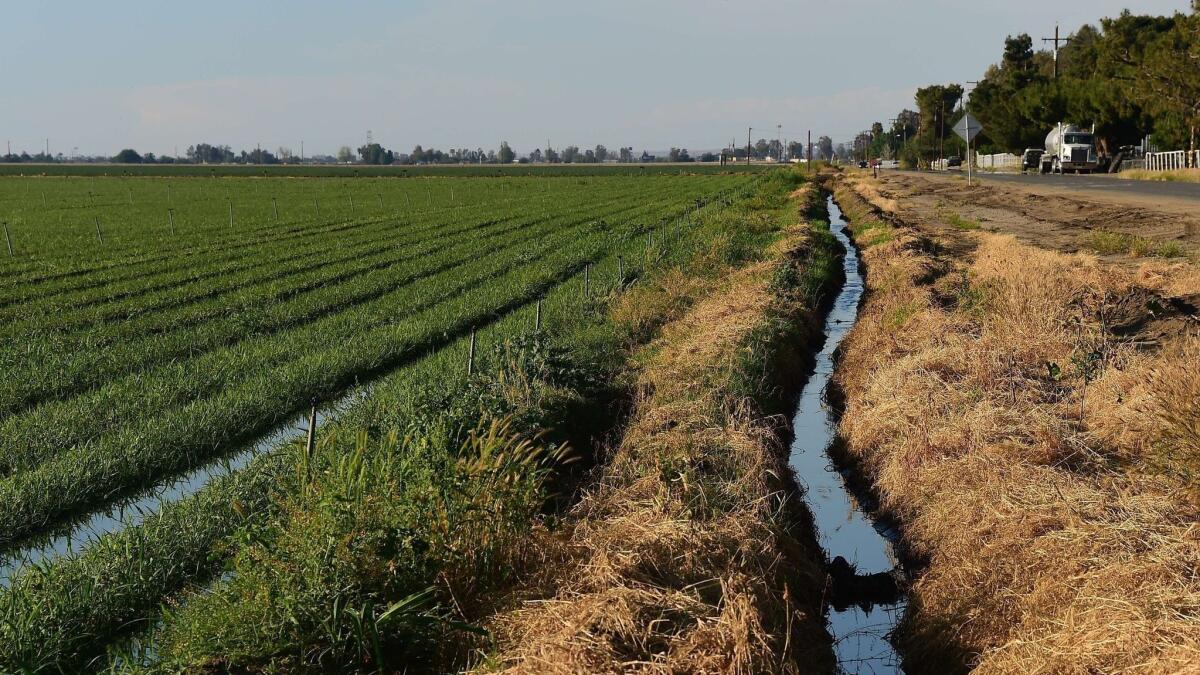Endorsement: Proposition 3 is the wrong water bond for California. Vote no

Californians will have to keep spending billions of dollars to secure the state’s water supply during an era of drought and hotter temperatures. But be careful. Especially when money is flowing and water isn’t, it’s easy to be seduced into spending on the wrong water projects at the wrong time and for the wrong benefits and beneficiaries. Proposition 3 would lead us into exactly that kind of trap. Vote no.
The measure would authorize an $8.877-billion state bond for water projects and natural habitat restoration, and to be frank, many of those projects are important components of the state’s complex water capture, storage and delivery network. Eventually they will have to be built, which means someone will have to pay for them.
But like many California water schemes, Proposition 3 is not merely a request for money, but an effort to force taxpayers all across the state to pay costs that ought to be borne by the private or regional interests that will benefit. That kind of cost-shifting isn’t always easy to spot in a bond measure. In this case it is.
It’s easy to be seduced into spending on the wrong water projects at the wrong time and for the wrong benefits and beneficiaries.
The biggest single pot of bond money would go to shore up aqueducts that deliver water from Sierra rivers to fields and orchards on the eastern side of the San Joaquin Valley roughly between Fresno and Bakersfield. As drought and environmental remediation have limited the supply of water for irrigation, more farmers have pumped more groundwater, which depletes the aquifer and causes the land to drop in elevation. That subsidence plays havoc with the canals and aqueducts, which also drop in some places, making them unable to carry as much water to the fields, which then produce much less and return even smaller or non-existent profits to farmers. More farmers then pump more groundwater to compensate for the loss of aqueduct water. It’s a self-destructive cycle. The aqueducts need to be fixed.
But they need to be fixed by their owners, operators and beneficiaries, not by the public at large. They are part of the Central Valley Project, a federal irrigation program, and the federal government — and the farmers — should be spearheading the repairs and paying the bulk of the cost.
Of course nothing about water is simple. San Joaquin Valley agricultural interests correctly point out that their economic fate is intertwined with the rest of the state’s. When they do well, they produce more food and more tax revenue. We all benefit.
That’s true, and farming is important. But it’s a private sector venture, made possible by federal investments. California taxpayers should spend their money on water projects that directly benefit the entire state and offer, at most, minimal amounts of regional or special interest pork.
That’s true even when the pork is for us. Proposition 3 includes a significant chunk of funding to prevent environmental meltdown in the Salton Sea and for restoration of the Los Angeles River, and The Times has supported previous water bonds that directed state money to such Southern California projects.
Enter the Fray: First takes on the news of the minute from L.A. Times Opinion »
But most of those bonds had strict procedures and guidelines for spending to ensure that projects had multiple benefits for multiple parties and statewide interests. For example, in 2014 voters approved Proposition 1, a bond measure that raised money for water storage. Proponents of huge dam projects argued that they should be first in line for funding. Importantly, though, the measure created guidelines (such as broad public rather than strictly regional benefits) and a commission to use those guidelines to prioritize projects. Big dams fell far down on the list.
Proposition 3 doesn’t have those procedures or guidelines. Funding would be continuously appropriated, meaning, in effect, that once voters approve the bond, state agencies will make their own decisions on spending, with little review or oversight.
In June, voters approved Proposition 68, a $4-billion parks and water bond that was designed and put on the ballot by lawmakers. Some opponents of Proposition 3 argue that it’s too early to ask Californians for more water funding. Others say such bonds should be vetted by the Legislature, as Proposition 68 was, and not be put on the ballot by voter petition, as Proposition 3 was.
But the problem is not the short time since the last bond or the method of getting the new one on the ballot. The problem is what’s in it: too much spending by all Californians for the benefit of a few, with too little oversight on projects. This is exactly how not to do a bond. Voters should reject Proposition 3.
Follow the Opinion section on Twitter @latimesopinion and Facebook
More to Read
A cure for the common opinion
Get thought-provoking perspectives with our weekly newsletter.
You may occasionally receive promotional content from the Los Angeles Times.










